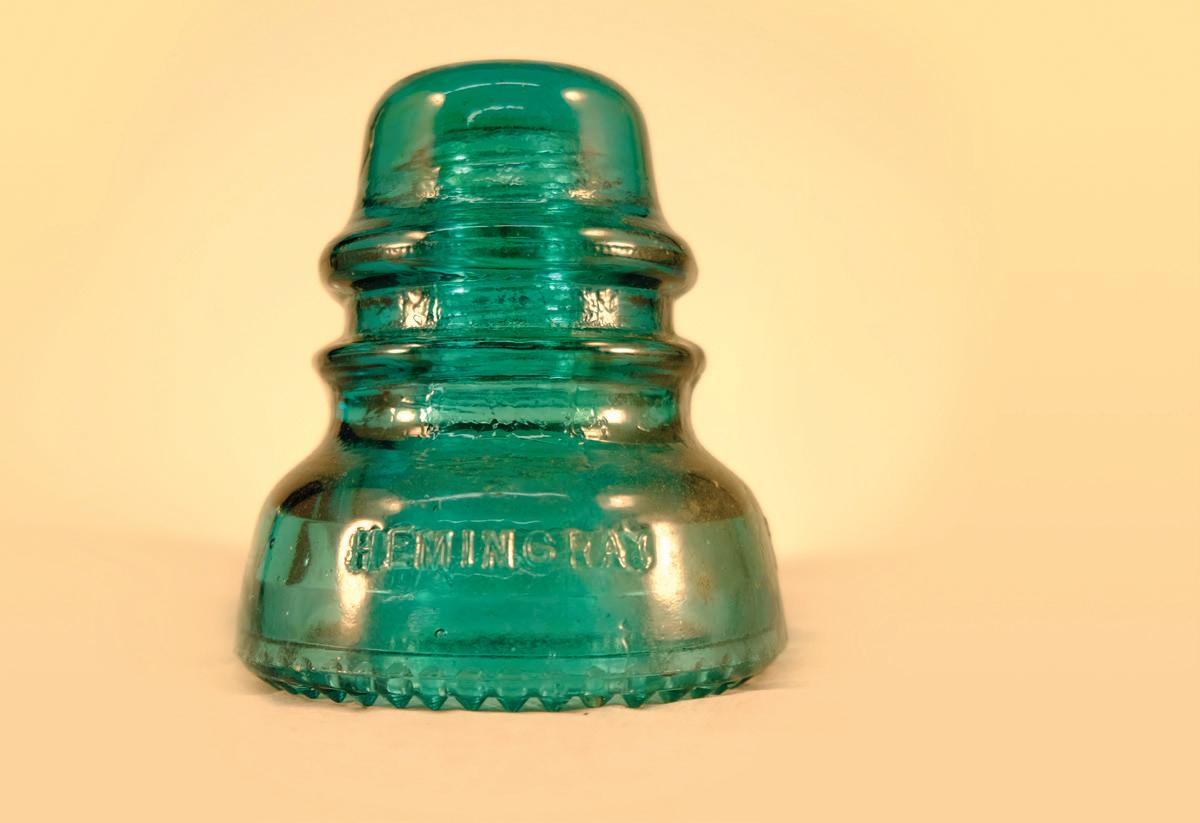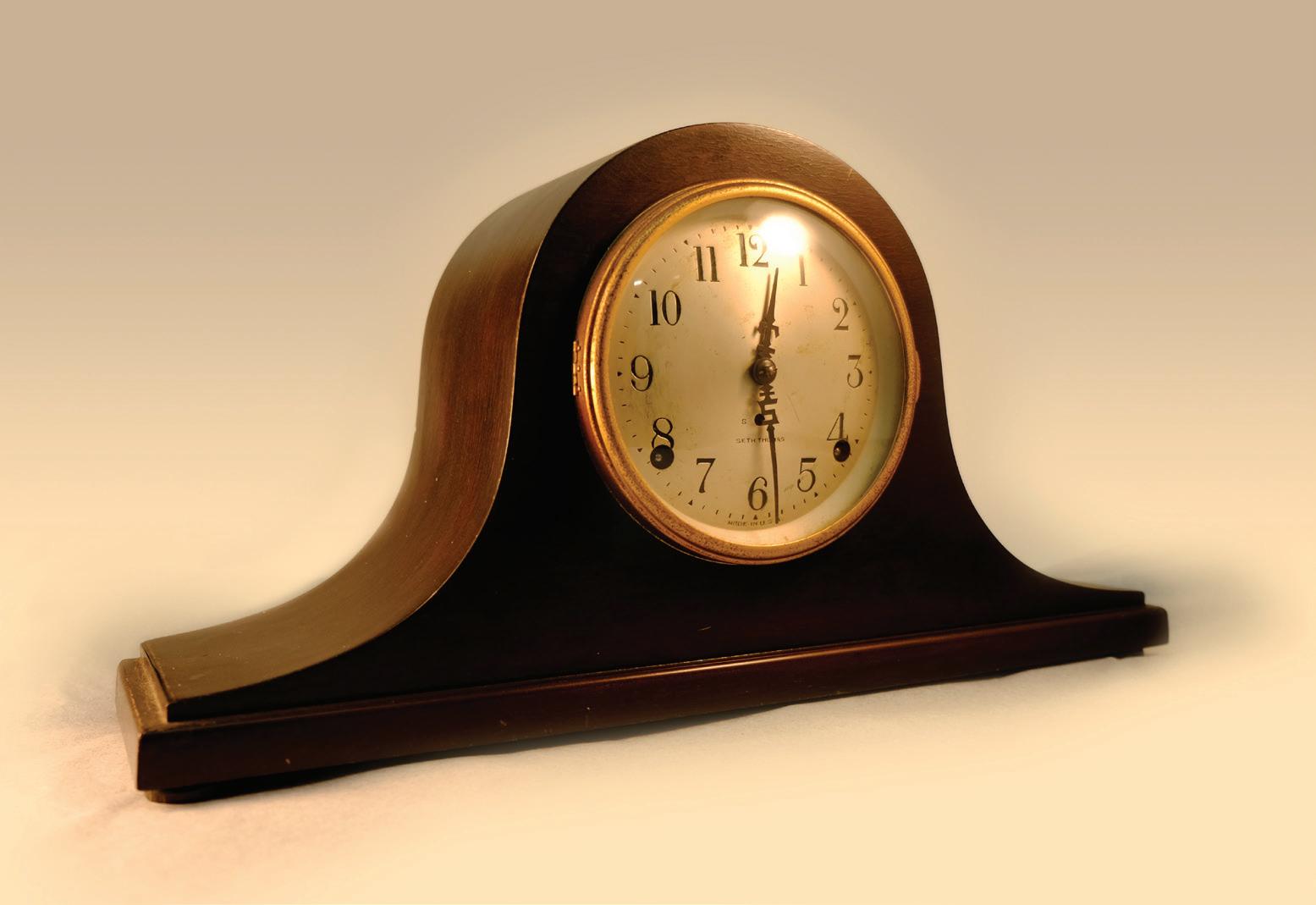
2 minute read
Artifact Research Quick Tips
by Paul Vincent, Registrar/Collections Assistant

SETH THOMAS EIGHT-DAY CLOCK, ca. 1920-1930
A good historian needs a keen eye, reliable sources, and sound judgement when researching a person, place, or thing from the past. Museums and other similar institutions stake their professional credibility on the need for correct names, dates, and other important details when presenting such information to their visitors and their peers; accurate facts make for successful exhibits and programming.

EMERSON ELECTRIC FAN, ca. 1948-1950
Studying any artifact requires a thorough inspection of the item, combing over every nook and cranny for clues: maker’s marks, manufacturer’s labels, serial numbers, or even just an individual’s initials. Take for instance a few of our artifacts on display in our new exhibit, The Day the Lights Came On . Their brand names are only the most apparent of many crucial features we can look at. Take further note of their unique details: the shape of the electric fan’s blades, the glass color of the insulator, or the style of the numbers on the face of the clock. All are essential details that help accurately identify these objects.

GLASS INSULATOR, 20th century
Evaluating and comparing the items in question to known examples, using knowledgeable expertise, can help further confirm its authenticity. In the case of the electric fan, after documenting all its individual markings and making careful correlations between it and other types, we’ve determined this one to be an Emerson model “77646-AS” produced in St. Louis, Missouri, sometime between 1948 and 1950.










